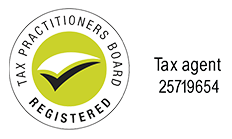When the team at DBA Accountants work with you, we promise to always use clear and non-jargon language to communicate. Having said that, we thought it might be helpful for you if we put a glossary together to explain some of the more commonly used terms in accounting… just to shed a little more light on the subject.
Account: Formal record that represents, in words, money or other unit of measurement, resources, claims, transactions or other events.
Accounts Payable : Liabilities of a business and represent money owed to others.
Accounts Receivable: Assets of a business and represent money owed to a business by others.
Accountant: A person skilled in the recording and reporting of financial transactions. That the team at DBA Accountants!
Accounting: Reporting, analysing, and summarising of the financial records of a business. That what we do! And… at the risk of bragging – we do it amazingly well!
Accrual: Recognition of an expense or revenue that has occurred but has not yet been recorded.
Amortisation: Reduces debts through equal payments that include interest.
Asset: Tangible or intangible items of value that are owned.
Auditors: People who examine financial accounts and records to evaluate their accuracy and the financial condition of the entity.
Balance Sheet: Provides a snapshot of a business’ assets, liabilities, and equity on a given date. Also known as a Statement of Financial Condition.
Bank Statement: A periodic statement showing the balance in the account at the beginning of the month, during, and at the end of the month.
Bookkeeping: Recording of financial transactions in an accounting system. Another of our amazing talents!
Capitalise: Convert a schedule of income into a principal amount, called capitalised value, by dividing by a rate of interest.
Cash: Asset account on a balance sheet representing paper currency and coins, negotiable money orders and cheques, bank balances, and certain short-term government securities.
Cash Basis: A process of bookkeeping by which revenues and expenditures are recorded when they are received and paid.
Cash Dividend: Distribution of a corporation’s earnings to stockholders in the form of cash.
Cash Flow: The difference in money flowing in and out. A negative flow indicates more money going out than coming in. A positive flow shows more money coming in than going out.
Cost Accounting: Used internally to determine the cost of operations and to establish a budget to increase profitability.
Credit: Entered on the right side of a double-entry bookkeeping system that represents liability, equity and revenue increase on the credit side.
Debit: Entered on the left side of a double-entry bookkeeping system that represents assets and expenses increase on the debit side.
Debt: Money, notes, bonds, goods or services which represent amounts owed.
Depreciation: Decrease in an asset’s value over time.
Dividends: Profits returned to the shareholders of a corporation.
Equity : Represents the value of company ownership.
Excise Tax: Tax or duty on the manufacture, sale, or consumption of commodities, eg. alcohol, fuel, tobacco, etc.
Fair Market Value: Price at which property would change hands between a buyer and a seller without any compulsion to buy or sell, and both having reasonable knowledge of the relevant facts.
Financial Statement: Reports the financial activities of a business.
Gross Income: The beginning point for the determination of income, including income from whatever sources derived.
Income Statement: A financial statement that documents the difference in revenue and expenses resulting in income.
Invoice: Shows the amount of money owed for goods or services received.
Liability: Debts or obligations owed by one entity (debtor) to another entity (creditor) payable in money, goods, or services.
Liquid Assets: Cash, cash equivalents, and marketable securities.
Loan: A monetary advance from a lender to a borrower.
Net Income: Revenue minus expenses, taxes, depreciation and interest.
Payroll: An account listing employees and any wages and salaries due them.
Profit: Positive difference that results from selling products and services for more than the cost of producing these goods.
Statement of Account: A written document that shows all charges and payments – accounts receivable statement and accounts payable statement.
Tax: Charge levied by a governmental unit on income, consumption, wealth, or other basis.









